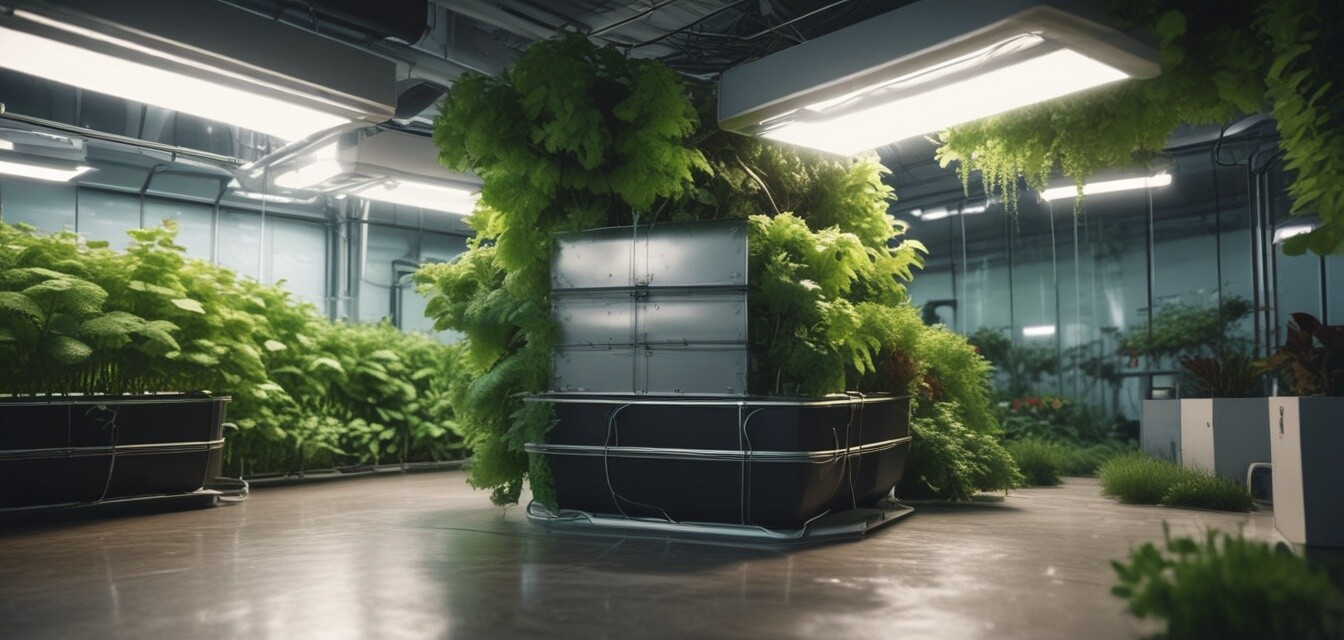
The Impact of Hydroponics on Climate Change
Key Takeaways
- Hydroponics offers a soil-less method of growing that can conserve water and space.
- This method can significantly reduce the carbon footprint associated with traditional agriculture.
- Hydroponic systems can contribute to urban farming solutions, enhancing food security in cities.
- By utilizing nutrient-rich water and efficient light sources, hydroponics promotes faster plant growth.
- Innovations in hydroponics can lead to sustainable practices in food production, helping combat climate change.
Climate change is a pressing global issue that is affecting ecosystems, food security, and human health. As the pressure mounts on traditional farming methods due to limited resources and changing climate conditions, innovative agricultural solutions are becoming crucial. One such solution is hydroponic gardening, a method that has the potential to revolutionize how we produce food while also addressing some of the effects of climate change.
What is Hydroponics?
Hydroponics is a method of growing plants without soil. Instead, plants are grown in a nutrient-rich water solution that delivers essential minerals directly to the roots. This allows for greater control over growing conditions, faster growth rates, and the ability to grow in urban areas where space is limited.
Advantages of Hydroponic Systems
| Advantage | Description |
|---|---|
| Water Efficiency | Hydroponics uses up to 90% less water than traditional soil gardening by recirculating water. |
| Space Optimization | These systems can be set up vertically, maximizing space usage in urban environments. |
| Reduced Carbon Footprint | Localized food production decreases transportation emissions associated with food distribution. |
| Pesticide Reduction | Hydroponics often requires fewer pesticides, leading to a healthier food output and less environmental impact. |
Hydroponics and Climate Change
As climate change continues to pose challenges for conventional farming, hydroponics presents a viable alternative that can help mitigate some of these effects. Let's break down how hydroponics contributes to fighting climate change:
1. Resource-efficient Food Production
Hydroponics enables the production of food with minimal land and water resources. Unlike traditional farming methods, which often require extensive land and significant water usage, hydroponic systems utilize technology and innovation that can grow more food in lesser space with decreased resource consumption. This efficiency can relieve some pressure on natural ecosystems and lower the overall demand for agricultural land.
2. Urban Farming Solutions
With the rise of urban populations globally, hydroponics can play a critical role in local food production. By installing hydroponic systems in urban settings, food can be grown closer to consumers, reducing transportation needs and associated carbon emissions.
3. Sustainable Practices
Hydroponic gardening can be integrated with renewable energy sources such as solar panels or wind turbines to power grow lights and pumps, thereby reducing reliance on fossil fuels. This integration promotes not only sustainable food production but also a more sustainable energy model.
4. Nutrient Delivery Innovations
The ability to precisely control nutrient delivery in hydroponics means that farmers can achieve optimal growth conditions with minimal waste. This innovative approach reduces the need for chemical fertilizers that contribute to soil and environmental degradation, further supporting climate-friendly practices.
Comparison: Hydroponics vs Traditional Farming
| Aspect | Hydroponics | Traditional Farming |
|---|---|---|
| Water Usage | 90% less | High |
| Space Required | Vertical growth possible | Horizontal land use |
| Growth Rate | Faster growth | Seasonal growth |
| Environmental Impact | Lower carbon emissions | Higher due to land use and transport |
Challenges of Hydroponics
While hydroponics offers numerous advantages, there are obstacles to its widespread adoption:
Pros
- Maximized resource efficiency
- Reduced land requirements
- Faster crop rotation and growth
- Potential for year-round production
Cons
- Initial setup costs can be high
- Requires technical knowledge and maintenance
- Dependent on technology and electricity
- Potential issues with water quality and nutrient management
Future of Hydroponics in Climate Mitigation
As we continue to grapple with the realities of climate change, the importance of innovative agricultural techniques like hydroponics cannot be overstated. Continued research, technological advancements, and shifts in consumer demand toward sustainable practices can help position hydroponics as a key player in future food security.
Staying Informed with Hydroponic Trends
For those interested in learning more about how hydroponics can shape our future, we encourage you to explore our blog section on News and Trends. Stay updated on the latest innovations and research that are driving the future of hydroponic gardening.
Conclusion
Hydroponic gardening stands as a promising solution to address some of the most pressing challenges of climate change. By implementing more resource-efficient practices, food production can be transformed to mitigate environmental impacts while still meeting the needs of a growing population. It is crucial that we embrace this technology as part of our collective response to climate change, working towards a sustainable and resilient food future.
Tips for Implementing Hydroponics
- Start small with a DIY hydroponic kit to understand the basics.
- Learn about the different nutrient solutions required for various plants.
- Consider using organic methods and sustainable materials in your setup.
- Stay connected with hydroponic communities online for support and tips.

